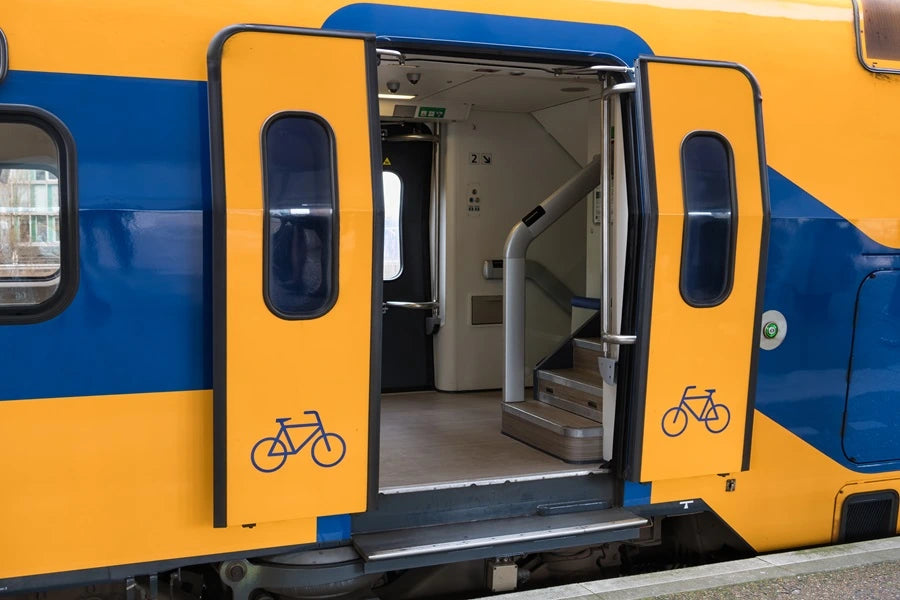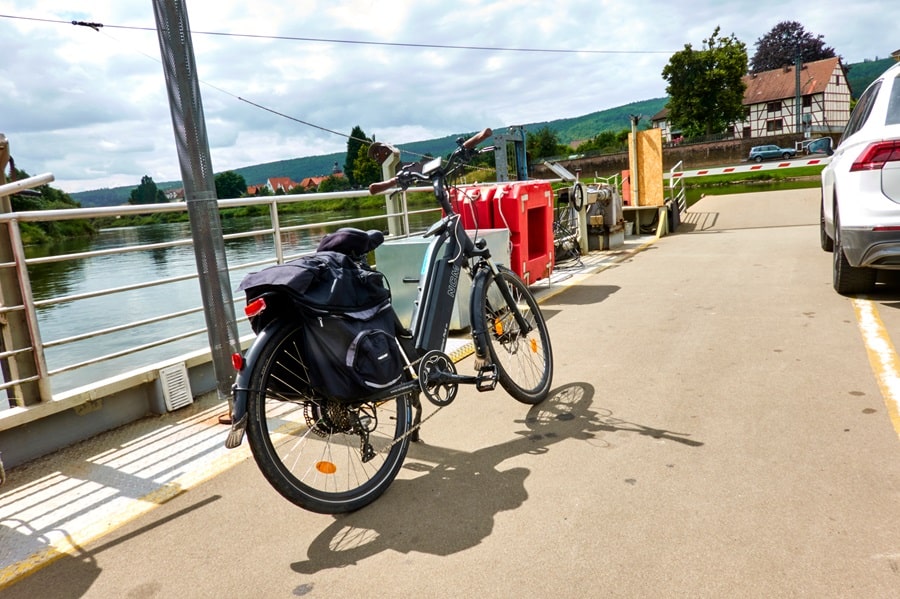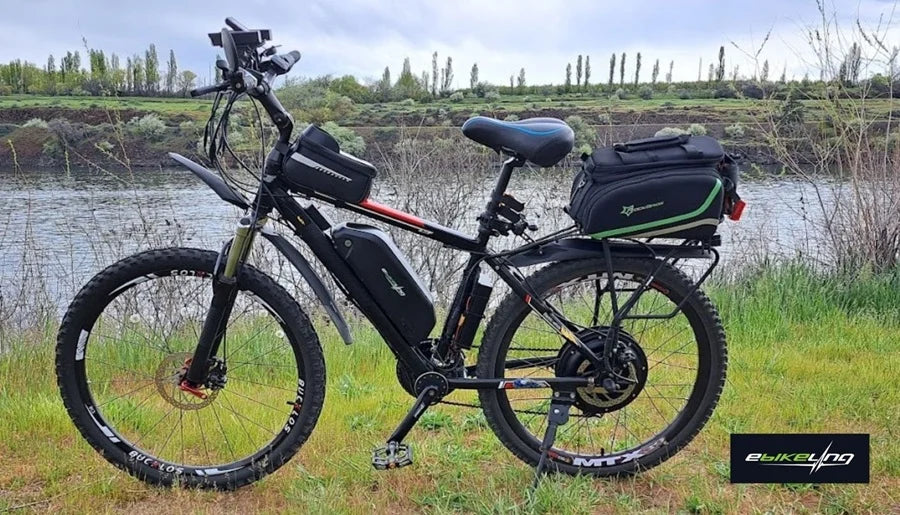The surge in e-bike popularity has many people wondering: can I bring my e-bike on public transport? The answer, like many things in life, is "it depends." This guide from eBikeling will help you understand how to bring your electric bike on public transport in the United States.
Safe Transportation of Your E-Bike: Things to Know
To transport your electric bike safely and conveniently, you need to know its following parameters:
- Weight: Folding e-bikes, lightweight and designed for portability, typically weigh around 30-40 pounds. Standard e-bikes generally weigh between 40-50 pounds. E-mountain bikes (E-MTBs), built for tackling rough terrain, come with sturdier frames and powerful motors, weighing around 50-70 pounds. Electric cargo bikes, designed to haul heavy loads, can weigh anywhere from 70-120 pounds.
- Tire width: 1.75 inches to 2.5 inches is a common range for commuter and some hybrid e-bikes. For fat-tire e-bikes, it's around 4 inches. Wide tires offer superior traction and stability for tackling challenging off-road terrain like loose dirt, sand, or snow.
- Wheelbase: The wheelbase refers to the distance between the center of the front and rear wheels. There's no significant difference in average wheelbase length between most e-bikes and regular bikes of the same style. Road bikes typically have a shorter wheelbase – around 38.6 inches to 41.3 inches. Hybrid bikes – around 41.3-45.3, and mountain ones – 43.3-49.2 inches.
Your E-Bike & Trains

Train regulations for bikes can vary between different transit systems. We’ve broken down some common scenarios.
Commuter Rail
Many commuter rail lines, like Metro North in New York, allow bringing bikes during off-peak hours (typically weekdays before and after rush hour, weekends, and holidays). Folding bikes are generally permitted anytime, while regular bikes might require a permit or a specific bike rack. Check with your local transit system for details.
Subway Trains
Subways often have stricter rules. Some, for example, New York City's subway system, allow bikes on a first-come, first-served basis during off-peak hours only, but only if not crowded. Always prioritize other passengers and be prepared to wait for the next train if necessary.
Train Tips
- Folding bikes are your best friend on trains. When folded, they're usually treated as luggage.
- Bike racks on trains are often limited. Board early to secure a spot.
- Be aware of rush hour restrictions. Bikes are allowed during off-peak hours on many trains, but not during commutes.
- Check with your local transit system for specific rules on bike size, weight limitations, and designated loading areas.
Your E-Bike & Buses
Buses can be even trickier for e-bikes. Here's what to consider:
- Folding bikes are generally your only option on most buses. Properly folded bikes can usually be stored in the designated luggage compartment on board.
- The bus operator has the final say. If space is tight, they might refuse your bike, even if it's folded.
- Some larger buses, especially in metropolitan areas, might have exterior bike racks. These are limited in number, so be prepared for an alternative plan.
Bus Tips
- Folding bikes are essential for buses.
- Always be courteous to other passengers. Don't block the aisle or doorways with your bike.
- Bus operators have the final call. Be respectful of their decision.
- Consider alternative routes if your bus doesn't allow bikes.
Your E-Bike & Ferries

Ferries can be a great way to travel with your e-bike, offering scenic views and a relaxing start to your ride. Here's the scoop:
- Most ferries allow bikes, with some limitations. Check with the ferry operator for specific rules.
- Designated areas for bike parking are common on ferries.
- Secure your bike with a sturdy lock while on board.
- Be mindful of fellow passengers and avoid blocking walkways or exits with your bike.
Ferry Tips
- Check ferry operator websites for specific bike parking information.
- Secure your bike with a lock to prevent theft.
- Be courteous of other passengers and keep your bike out of the way.
General Tips for Taking Your E-Bike on Public Transit
- Know before you go: Always check the website or app of your chosen transit system for their specific rules on bikes on public transport.
- Foldable bikes are lifesavers: Invest in a folding bike if you plan to use public transport regularly with your e-bike.
- Remove the battery: Do this before loading your e-bike on board to reduce its weight. By the way, remember to check out the ideal battery size for your e-bike in our article.
- Rush-hour restrictions: Avoid bringing your bike during rush hour on trains and buses. Opt for a walk or alternative transportation during peak times.
- Be prepared for alternative plans: Always have a backup plan in case your bike isn't allowed on your chosen route.
- Safety first: Always secure your bike with a sturdy lock when leaving it at a train station, bus stop, or ferry terminal.
- Be courteous: Public transport is a shared space. Be mindful of other passengers and avoid blocking walkways or doorways with your bike.
The Benefits of Combining E-Bikes and Public Transport

Combining e-bikes with public transport offers many advantages.
Greater Travel Range
Electric bikes can extend the reach of public transport and allow you to travel farther distances and explore new areas.
Reduced Car Dependence
By combining e-bikes with public transport, you can significantly reduce your reliance on a car, leading to less traffic congestion, lower carbon emissions, and a more sustainable commute.
Exercise and Health
E-bikes still provide a good workout, even with the electric assist. This can be a great way to get some exercise integrated into your daily commute.
Cost Savings
Public transport and e-bikes are generally much more affordable than car ownership, saving you money on gas, parking, and maintenance.
Convenience
This combination allows for door-to-door travel in many cases. You can ride your e-bike to the nearest train or bus stop, eliminating the need for a long walk or additional car trip.
The Future of E-Bikes and Public Transport
The future of bikes on public transport looks bright. Here are some trends to watch.
Improved Infrastructure
Many cities are investing in dedicated bike lanes, secure bicycle parking facilities, and expanding bike rack availability on public transport.
Integration with Public Transit Apps
Some cities are integrating e-bike rental and availability information into their public transit apps, making seamless multi-modal travel easier than ever.
E-Bike Regulations
As e-bikes become more popular, expect clearer and more standardized regulations for their use on public transport across different regions.
Conclusion
E-bikes and public transport can be a powerful combination for getting around efficiently and sustainably. By understanding the rules, being prepared, and following some basic safety and courtesy tips, you can enjoy the many benefits this combo offers.
So we encourage you to contact eBikeling for your perfect electric bicycle, e-bike components, or accessories and explore the possibilities of e-bikes and public transport in your city! Our experts can equip you with the knowledge and equipment you need to ride safely.




